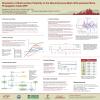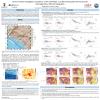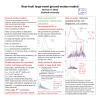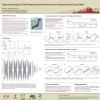Poster #223, Ground Motions
Basin and Site Effects in the U.S. Pacific Northwest Estimated from Small-Magnitude Earthquakes
Poster Image:

Poster Presentation
2020 SCEC Annual Meeting, Poster #223, SCEC Contribution #10627 VIEW PDF
celeration for frequencies of 0.1 to 20 Hz. Due to a lack of FAS ground motion models (GMMs) specific to subduction zones, we compute ground motion residuals relative to the BA18 GMM which was developed for shallow crustal earthquakes in California. Using the residuals, we perform a linear, crossed, mixed-effects regression to estimate the bias, event, and site terms which allow us to examine the applicability of the BA18 GMM to the Cascadia subduction zone. We investigate the scaling of the site terms with respect to VS30 (average shear-wave velocity from the surface to a depth of 30 meters), as well as basin depth indicators Z1.0 and Z2.5 (depths to the 1.0 km/s and 2.5 km/s shear wave velocity horizons). Although the site term scaling with respect to VS30, Z1.0, and Z2.5 generally shows consistency with the BA18 model, we find that the differences in sites are better characterized when comparing stations within the Puget Lowlands vs. outside the Puget Lowlands. Based on preliminary analysis, we find that for frequencies less than 5 Hz, the Puget Lowlands stations on average exhibit 1.2 – 2.2 times amplification of ground motions, relative to non-Puget Lowlands stations, with maximum amplification occurring around 0.6 Hz. At frequencies greater than 5 Hz, we observe de-amplification among the Puget Lowlands stations, with the smallest average amplification factor of 0.65 occurring at 10.0 Hz.
SHOW MORE
SHOW MORE





















































